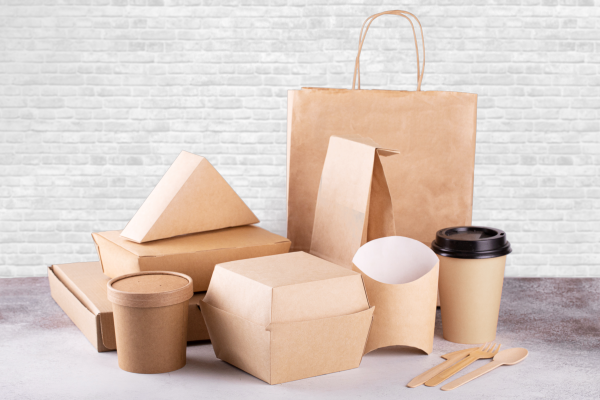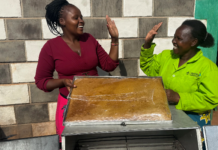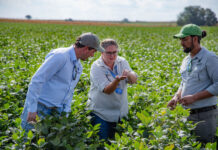Sugarcane packaging has emerged as a possible alternative to traditional petroleum-based plastics. The sugarcane packaging market is projected to reach US$ 255.0 Million by 2023 and US$ 889.0 Million by 2033, expanding at a CAGR of 13.3% during the forecast period.
Given the increased need for sustainable and eco-friendly packaging options and numerous environmental concerns, the demand for sustainable packaging alternatives is expected to propel the sugarcane packaging market.
Market Outlook
The biodegradability of sugarcane packaging is one of its key features. Sugarcane fibers and bioplastics made from sugarcane degrade naturally in the environment, decreasing trash in landfills and the oceans. Hence, it helps to minimize greenhouse gas emissions because sugarcane-based packaging decomposes slowly as compared to standard plastics.
Sugarcane-based packaging can be used for food packaging, cosmetics, and even electronics. This makes it a feasible choice for companies trying to lessen their environmental effect while still serving their consumers’ needs.
Sugarcane packaging is also compostable, which means it may decompose into organic matter and be utilized as a nutrient-rich soil conditioner.
Sugarcane-based packaging is thus an appealing option for the agriculture sector, as it can assist to improve soil health and minimize the need for artificial fertilizers. Given the increased need for sustainable and eco-friendly packaging options.
Europe has been one of the main regions in the sugarcane packaging market. The region has been aggressively enacting legislation and programs to limit plastic waste and promote the usage of sustainable alternatives such as sugarcane-based packaging.
The European Union’s Single-Use Plastics Directive, for example, prohibits the use of some single-use plastic items while encouraging the use of sustainable alternatives such as sugarcane-based packaging.
“With the growth of e-commerce and online food delivery services, the convenience of packaged food and beverages has become essential. Governments and organizations all around the globe are passing laws and doing other actions to reduce plastic waste, realizing the advantages of sugarcane packaging, which has the important feature of being biodegradable, compostable, and recyclable. In addition, a lot of businesses are entering the sugarcane packaging industry since it is more cost-effective, enhances company branding, and has a less carbon imprint.”- Says an FMI Analyst
Key Takeaways from the Sugarcane Packaging Market
- Tableware made from sugarcane bagasse, the fibrous residue remaining after juice extraction, is gaining popularity due to its eco-friendliness and durability. The sugarcane tableware market held a market share of 77.9% in 2022 due to the increasing demand for sustainable and eco-friendly products.
- The food sector recorded a 68.9% market share in 2022, as it is highly incorporated in food packaging, food service disposables, and beverage packaging. Sugarcane-based packaging is durable, insulating, and resilient to heat and moisture, making it suitable for fast-food restaurants, coffee shops, and other food service operations.
- Europe is a leading market with a market share of 29.9% in 2022 due to the increasing need for sustainable and eco-friendly packaging options. The food and beverage industry is the important end-user of sugarcane packaging in Europe, with high demand for packaging solutions for fruits and vegetables, baked goods, and ready-to-eat meals.
- The United States is a lucrative market in North America with a market share of 13.2% in 2022 due to favorable policies encouraging the use of sustainable alternatives such as sugarcane-based packaging. Big corporations, including Coca-Cola and PepsiCo, have pledged to use sustainable packaging options, projected to enhance demand for sugarcane packaging in the country.
- China is set to be a lucrative market for sugarcane-based packaging market recording a CAGR of 8.4% in 2023 due to the substantial corn sector that provides a low-cost source of raw materials for the manufacture of sugarcane-based packaging solutions.
- India is also a prominent player in the sugarcane packaging business with a transforming growth rate of 9.3%, as it is one of the world’s top producers of sugarcane. The country’s demand for sustainable packaging solutions has grown in recent years, owing to rising environmental concerns and awareness among consumers and businesses.
Category-wise Insights of Sugarcane Packaging
Tableware’s Widely Utilized across Various End-user Industries – A Sustainable Alternative to Traditional Tableware.
FMI Anticipates, the segment to acquire more than 77.9% of the Market Share in 2022.
Sugarcane tableware is made from bagasse, the fibrous residue that remains after extracting juice from sugarcane.
Sugarcane tableware includes plates, bowls, cups, and utensils, and has gained popularity in the food service industry due to its eco-friendly and durability. It is also microwave and freezer safe, making it a convenient option for both consumers and businesses.
The sugarcane tableware market is expected to see significant growth in the coming years due to the increasing demand for sustainable and eco-friendly products. The food service industry, particularly in the fast-food and quick-service restaurant segments, is expected to be a leading end-user of sugarcane tableware.
Food Businesses to Acquire 68.9% Market Share of the Sugarcane Packaging Market.
Sugarcane-based packaging is used in food packaging to wrap and protect food products such as fruits, vegetables, and baked goods. It is also used to package frozen foods and ready-to-eat meals.
Sugarcane packaging is utilized in the manufacture of food service disposables such as plates, bowls, cups, and utensils because of their durability, insulating characteristics, and resilience to heat and moisture, these items are suitable for fast-food restaurants, coffee shops, and other foodservice operations.
Sugarcane packaging is also utilized in the beverage industry, notably for bottled water and other non-alcoholic beverages.
Competitive Landscape
The market is characterized by intense competition, with players focusing on innovation and product differentiation to gain a competitive edge. Manufacturers are investing in research and development to create new and improved sugarcane-based packaging products with enhanced properties such as increased strength, durability, and heat resistance.
Market players are focusing on developing customized packaging solutions for specific applications, such as food packaging, to cater to the specific needs of their customers.
These insights are based on a report on Sugarcane Packaging Market by Future Market Insights.








